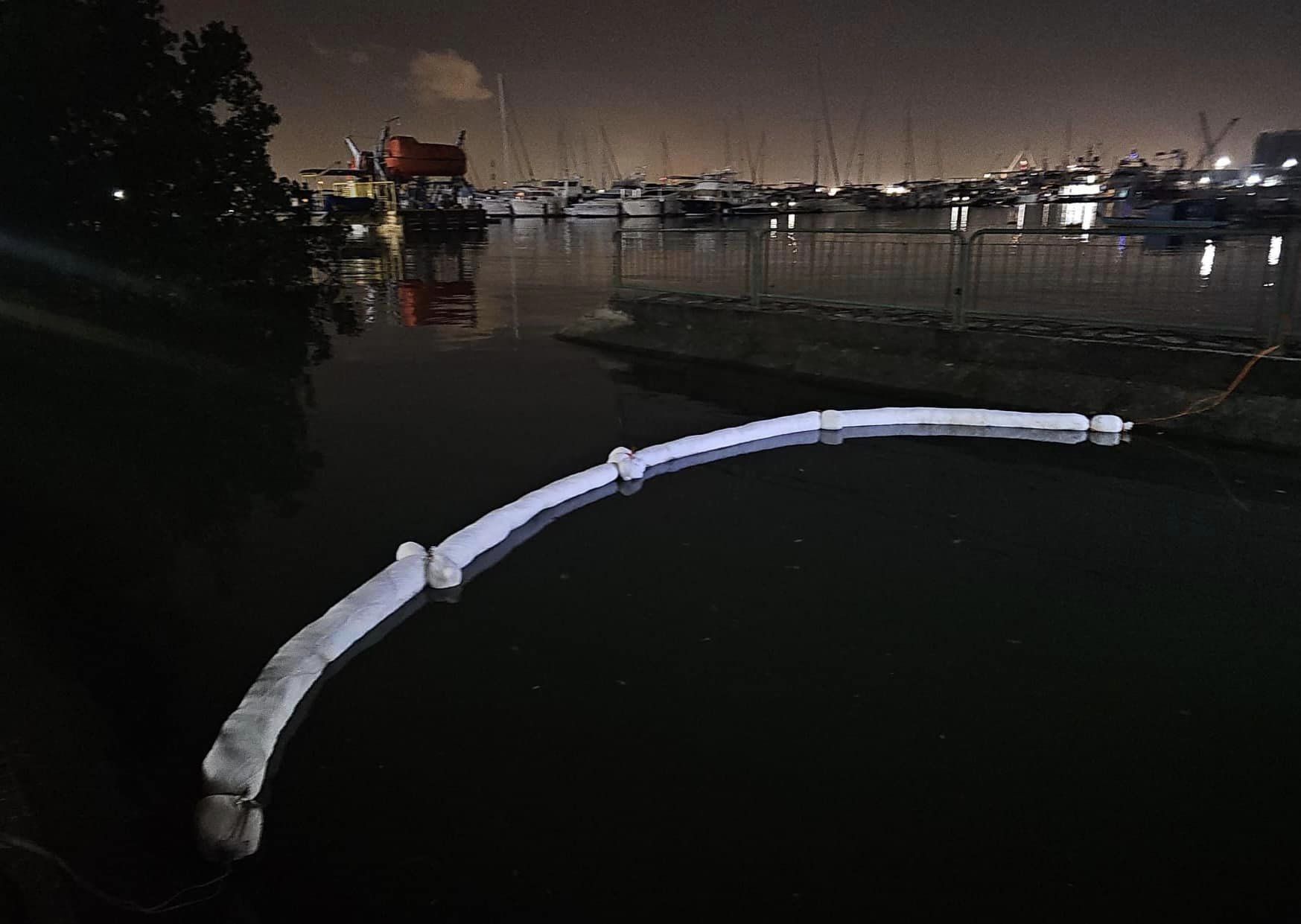About 30 to 40 tonnes (about 30,000 to 40,000 kg) of oil and waste “slop” has leaked from a land-based pipeline on Shell Energy and Chemicals Park Singapore on Bukom Island.
Feeling some déjà vu? Here’s a video to recap what happened a few months ago:
But don’t worry; so far, the oil spill has been contained and has not spread to any other parts of Singapore’s waters.
Here’s what happened.
Oil Leaks into S’pore Waters From Shell Pipeline; No Oil Spotted in S’pore’s Shores Yet
The incident occurred last Sunday (20 October) just before dawn, at 5.30 am. The exact cause of the leak is still unknown, but oil was spotted in the sea channel between Bukom Island and Bukom Kecil.
No one was injured or affected by the incident.
Shell moved to alert the Maritime Port Authority (MPA) about seven hours later, at 1pm, and finally stopped the leak only at 3pm. Upon notification, MPA’s Port Operations Control Centre sent out a safety broadcast asking passing ships to steer clear of the affected area.
Shell said it was working with relevant government agencies to contain and clean up the spill. The company has “deployed containment booms, anti-pollution crafts and spraying of dispersant to contain and break up the oil as part of on-going clean-up effort.”

MPA assisted the effort by sending out seven anti-pollution crafts together with its contractor, Singapore Salvage Engineers. The agency also used drones and satellite imaging to identify any other oil spill sightings in the surrounding area.
Eight other local agencies were alerted and put on the lookout for any oil sightings. The Malaysian and Indonesian authorities were also alerted to the oil spill and advised to “look out for any oil sightings along their respective coastlines”.
As of 10 am, 22 October, oil has not been reported in any other areas.
In a statement on 21 October, the national water agency PUB said that oil had not been detected near the two desalination plants closest to Bukom Island (the Keppel Marina East Desalination Plant and Jurong Island Desalination Plant).
According to the Singapore Food Agency (SFA), no neighbouring fish farms had been affected either.
While the situation is being monitored, NEA has still advised the public to stay out of the waters at the beaches of East Coast Park, Kusu, St John’s and Lazarus Islands.
However, not all beaches are “closed”. People can still enjoy the waters at Tanjong Beach, Palawan Beach and Siloso Beach in Sentosa.
Containing the Spill
To stop the oil from spreading beyond port waters, MPA has deployed two Current Buster systems at the entrance to the East Johor Strait and to the west of Singapore. These systems work by filtering the contaminated seawater and collecting the spilled oil.
Anti-pollution crafts sent by MPA and Shell worked to disperse the oil floating on the surface by spraying it with a chemical solution.

Shell and MPA deployed containment booms, which are floating physical barriers that prevent the oil from spreading, around the initial oil spill area (between Bukom Island and Bukom Kecil). As a precautionary measure, PUB also deployed containment booms across the Marina Barrage to protect the Marina Reservoir.
While no oil has been sighted or smelled, oil-absorbent booms were deployed as a precautionary measure in the following areas:
- In the canals and key areas of East Coast Park and West Coast Park by the National Environmental Agency (NEA).
- Tanjong Beach, Palawan Beach, Siloso Beach, Sentosa Golf Club, ONE°15 Marina Club and Sentosa Cove by the Sentosa Development Corporation. The lock gates of Sentosa Cove have been closed, with oil-absorbent booms also deployed.
- Biodiversity-sensitive lagoons at Sisters’ Islands Marine Park, Berlayer Creek, the Rocky Shore at Labrador Nature Reserve, and the mangroves at the Marsh Garden at West Coast Parks by National Parks Board (NParks).




